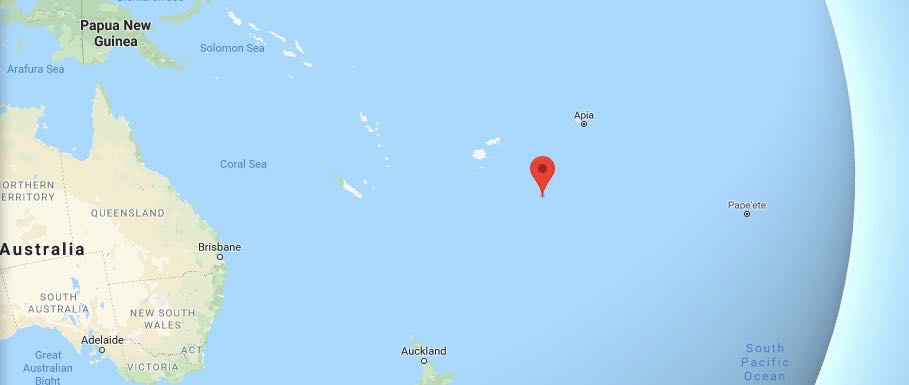Many thanks to SWLing Post contributor, DanH, who writes:
Internet and phone service between the Kingdom of Tonga and the outside world was disabled after an undersea cable was cut between Tonga and Fiji.
(Source: Radio New Zealand)
“Tonga’s submarine cable to Fiji was severed on Sunday night, meaning there were no phone or internet services for several days.
Interim satellite links have since been provided but the bandwidth is nowhere near what Tonga needs.
The deputy chief executive of Tonga Communications Corporation, Sione Veikoso, said the company is now providing extra capacity.
[F]ull restoration may be possible within a week but it could take a month.”
Speaking on the Radio New Zealand Pacific program Dateline Pacific (evening edition for 25 January 2019) deputy chief executive of Tonga Communications Corporation, Sione Veikoso said that two cables were cut. Click here to listen to the audio.
I heard the RNZ Dateline Pacific program on RNZI (shortwave), 9700 kHz at 11:13 UTC 1-25-2019.
Thanks for sharing, Dan. Yes, in times like these, shortwave radio makes for an easy, accessible way to get information directly from the source. Radio New Zealand International should be an easy catch in Tonga.
I’m filing this under the tag: Why shortwave radio?


So much for not having a backup system, too much reliance these days on a single system, gsm systems for instance regularly go down in cyclones earthquakes etc. Still a requirement for HF systems today.
Really? Shortwave isn’t doing anything more than it did before. The residents of Tonga could already get news from RNZ and other shortwave stations, but they could with equal ease receive satellite radio or TV, and can still hear news from their local radio and television stations, which can in turn get that news from all the standard local channels and from satellite feeds, which was probably how they were getting news before. Their problem isn’t reception, as their capabilities in reception of information are not much reduced. Their problem is communication, because the people of Tonga can’t talk to any people or systems external to the country. Shortwave doesn’t help with that. What they really could use is a more redundant connection, either with multiple cables going to different destinations or with better satellite network connections. Both of those are expensive, and for a country of Tonga’s size it is unlikely to happen, but that would help a lot more than a radio station will.
Don’t credit shortwave (or anything else) for a benefit it doesn’t provide.
“Don’t credit shortwave (or anything else) for a benefit it doesn’t provide.”
Thing is, you are falling into the trap that so many do when they see a reference to shortwave or other legacy technologies. I don’t think the intent here was to say that shortwave is *the only* viable alternative, that it would replace the internet, or that it would be Tonga’s saving grace. Simply that it is one other source of information that is accessible. Yes satellite is there for TV and radio news and relays of course. But shortwave is still there doing its thing in the background. That’s all this article is saying. Perhaps the title would be more accurate if it read “Shortwave is an alternative *for news* while Internet and phone service to the Kingdom of Tonga are cut”
Hard to claim shortwave isn’t a source of accessible information.
Good point. I’ll amend the title. Thanks!
Then build an inter-island RTTY-based radiogram service. The territorial government in Pago Pago would be happy to have any investment and geographically American Samoa isn’t too far away. Pago Pago and Fagotogo make up one of the most protected harbors in-region.
That would be how shortwave could contribute. The bandwidth available out there to connect off-island isn’t that great. If prices right and designed right, a small profit could be made.
Incremental island-hopping construction could lead to a nice network in due time. Start in AmSam to benefit from the US flag and laws then work outwards. With canneries having problems, there would be a workforce available to train to go and build.
It is one thing to listen to RNZI. It is another to have lived in-region previously and to now have crazy ideas on how to make things better.
Again, this doesn’t strike me as a particularly important source of information or potential for communication. It’s nice that the option is there, but local news outlets in Tonga are reported to be functioning fine. News doesn’t seem to be a problem. As for RTTY, I don’t know how the finances of that will work with Tonga’s budget, but there is also little benefit to be gained. I’m not against it, but I assume that any emergency communications that the RTTY would be used to relay would have no problem being sent via satellite, as the bandwidth on that is so much higher. Having the system should the satellite go down is fine, but it might be better to have a second satellite and a more reliable cable.